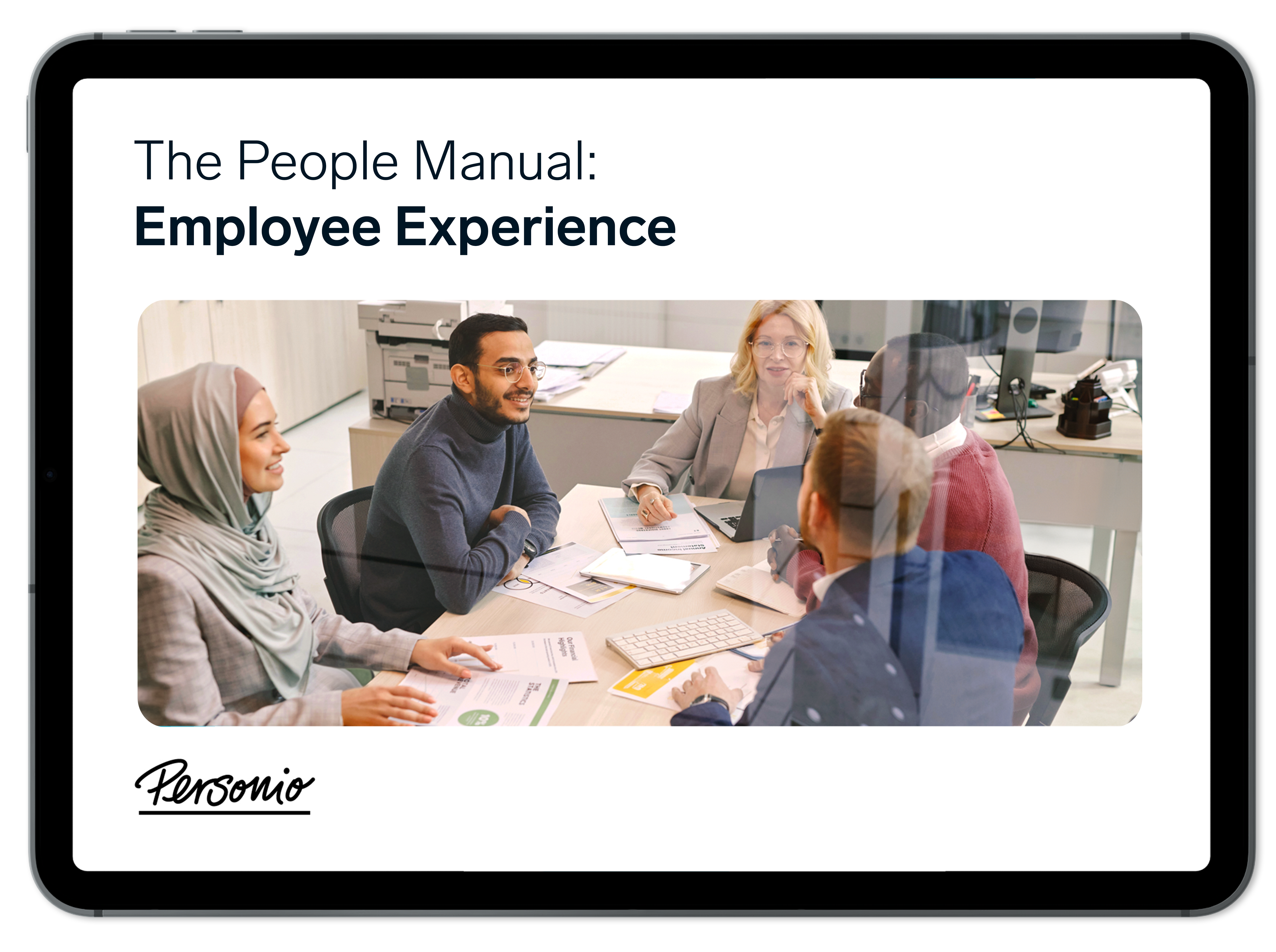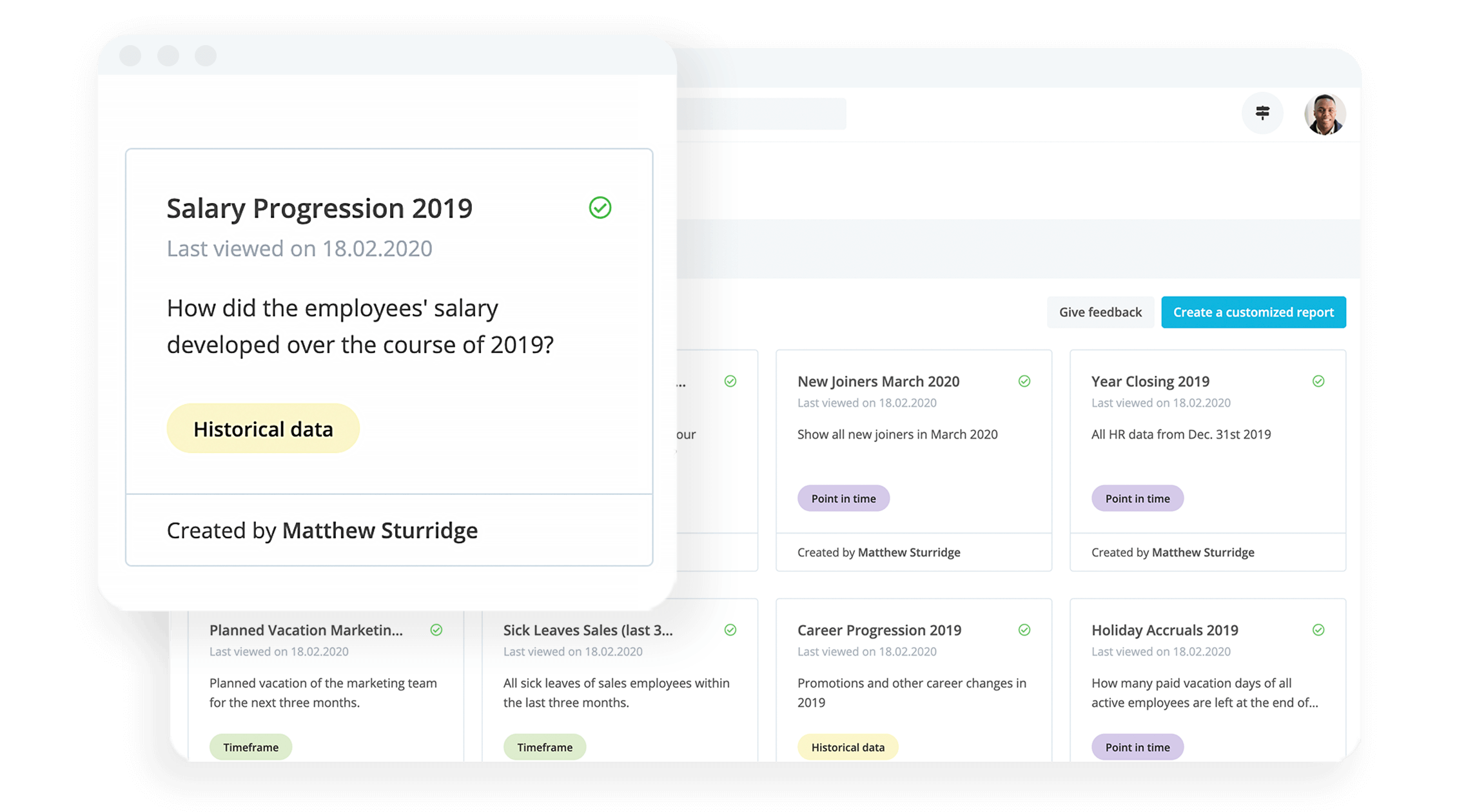Latest Blog Posts
Why Has Employee Experience Become So Important?

For many great organisations, employee experience factors heavily. Basically, it turns what could be a monotonous workday into an inspiring, motivating, and productive experience for employees. So, as an HR department, how should you go about focusing on employee experience? In this article, we’ll walk you through the concept and some practical tips, too.
Ready to focus on every element of employee experience? Download our guide.Contents
- 1What Is Employee Experience?
- 2What Is The Role Of Employee Experience?
- 3What Should Be Your Employee Experience Goals?
- 4Example: Jacob Morgan’s Employee Experience Model
- 5The Four Phases Of Employee Experience
- 67 Steps Toward Building Great Employee Experiences
- 7What Can You Learn From Employee Experience?
What Is Employee Experience?
Employee experience is a holistic matter. Essentially, it’s the collection of experiences that an employee has with their organization, and can include interactions, impressions, emotions, and more. Right from their first day, or even before that, employee experience is how an employee feels working at your organization (and how, in turn, your organization shifts and facilitates their continued experiences).
Here’s what the concept may include:
Onboarding
Day-to-day tasks
Staff experiences (perhaps culture-related)
Processes (like performance or planning absences)
Employee feedback and exit interviews
The governing idea here is that happy, satisfied, and listened to employees form the basis for overall company success. So, if your employees are happy and their experiences are positive, it will shine through in their work for your business.
Is Employee Experience The Same As Engagement?
While the terms ‘experience’ and ‘engagement’ are often viewed as synonymous, they are not one and the same. Let’s think about it like this: employee experience is the lived experience of an employee, whether spoken or unspoken, that influences their work rate and the quality of their overall contribution to the company.
On the other hand, employee engagement concerns more the relationship of an organization seeking to gain an understanding of that relationship and trying to put it into words. Employee experience is exactly that, what is experienced, whereas engagement is the process of trying to understand, rate, and plan around or respond to that experience.
If experience is the foundation of a building, we can think of engagement as the different floors of the building. Engagement builds on experience, and it seeks to address, level by level, the different facets of experience in varying ways.
Employee engagement grows from employee experience, through things like:
A positive and productive working environment
Appreciation through constant feedback and communication
A development plan that promotes strengths and minimizes weaknesses
We touched on it early, but why does a focus on experience matter? Let’s dive into the why…
Half a decade of insights on employee experience

Our "People Manual" covers all things related to employee experience and developing initiatives that result in more engaged employees. Grab your free copy right now.
Download It TodayWhat Is The Role Of Employee Experience?
The thrust of employee experience is that it can create positive points of contact between employees and the organization. It’s a long-term understanding that happier, fulfilled employees drive higher levels of performance. But, how do companies benefit? When your organization focuses on employee experience, others have found that:
How do companies benefit from employee experience?
Companies who invest in experience make four times more profit
Nearly 40% of companies surveyed report increased productivity
An equal number of companies say customer satisfaction increased as a result of engaged employees
A good Employee Experience can increase creativity and innovation within a company
What Should Be Your Employee Experience Goals?
If we boil things down to their essential elements, employee experience has three critical goals: Creating a work environment that benefits employees and the company, an increase in overall productivity, and higher rates of employee retention.
Here’s why each matter and why they matter in order:
Positive Working Conditions
Whether it’s sustainably sourced coffee, a modern laptop, or flexible working arrangements, even the smallest factors can have a profound influence on employee experience. When you put together a thoughtful work environment that helps employees feel good about their work, it can help increase their overall motivation, engagement, and productivity, too.
Increased Productivity
Productive employees are happy, satisfied, and more likely to stick around employees. That’s why organizational processes, like your HR processes, need to help facilitate positive employee experiences. After all, nothing is more frustrating than spending valuable time on making a vacation request, and the friction in that request alone may annoy employees. Easy-to-use HR software can counteract this, simplifying processes that can help employees focus on their work — and not the work that surrounds work.
Higher Employee Retention Rates
If you have an employee experience that focuses on all the right things: personnel development, feedback, and workplace culture, you can push back on the trend of employees leaving (like the one recently cited in Personio’s latest HR study). We found that four out of ten employees can imagine changing jobs this year, or already plan to do so. A great experience can push your attrition rates down.
Example: Jacob Morgan’s Employee Experience Model
There’s a few key aspects worth keeping in mind when it comes to employee experience, especially if you want it to have a solid, long-term effect on your entire organization. To make the case, we’re going to turn to an employee experience expert, Jacob Morgan.
As he suggest in his book, "The Employee Experience” advantage, there are a few key players in the arena when it comes to employee experience. In his assessment, these include:
The CEO or company leader who sets or communicates the mission and goals so that employees can relate to them.
The HR department who ensures the implementation of the strategy and initiates changes.
Managers that challenge and support employees and implement the employee experience goals of the HR department.
Last, but certainly not least, this also includes everyone in the company, who all pay attention to positive employee experiences. This includes daily feedback as well as involvement in decision-making processes.
In short, a strong corporate culture is the key to a positive employee experience.
The Three Rooms
In addition to Jacob Morgan’s key players, he also outlines three essential pillars of employee experience: the cultural, technical, and physical environments. Let’s break each of these down as he sees them…
The Cultural Environment
This environment defines how strong your employee’s emotional bond is with your company and workplace. How do they feel, and how strongly do they feel? This would include factors like:
Corporate culture
Leadership
Organizational structure
In an HR context, this means integrating internal employer branding into your HR strategy. If you make culture a focus, even as early as the recruiting process, it can help boost this environment as there will be a clear understanding of values, attitudes, and actions.
The Technical Environment
Everything in this environment includes the tools your employees need to do their best work. In this case, managers help decide which tools are important and necessary, and should base their decisions on these factors:
Ease of communication
Transparent flow of information
Clear project management
Technological understanding of the team
Basically, it doesn’t always have to be the newest and flashiest technology. Some teams still like to communicate over email, and it works great for them — what your organization needs to do is incorporate that feedback into the tool-selection process.
The Physical Environment
Last, but not least, is the physical environment. This will have a direct impact on your employees’ ability to concentrate on their work, be inspired by what’s around them, and to stay on task and fully productive.
But, what does it mean? As it happens, anything that stimulates the senses. So, if your employees can see, smell taste, touch, or hear it, then it is part of the physical environment. Take, for instance, a coffee machine or comfortable chairs.
The Four Phases Of Employee Experience
Of course, the model above is one way to think about and plan around employee experience. That said, it also helps to think about it in terms of timed phases. While employee experience is truly always happening, it can also happen differently on different timelines.
What does this mean? If we consider the employee lifecycle, we can figure out some distinct places where employee experience maybe factors more heavily (or simply differently) when compared to others. Here are the four phases we think you should keep in mind:
Phase | Explained |
|---|---|
Employee Acquisition | How did the application process go? Were all of their questions answered promptly? How quickly did the applicant respond to the offer? How did they respond to the offer? How did you communicate next steps? |
Onboarding | A structured process can be a huge boon to success in this stage. The first day can often be one of the most important, so if an employee has the necessary equipment, agenda, and access to all their relevant coworkers, they can be set up for success with a positive experience that helps them get started. |
Development | As an employee grows within an organization, they want to be able to feel that growth. Performance reviews and things like development budgets can help, but an employee needs to know that an organization is not only making these things available for their growth, but making them a requirement to encourage them even further. |
Off-boarding | Even a final impression counts! That’s why the last days of an employee’s tenure can have an effect on experience, both on the employee and of their coworkers. A clear and structured off-boarding can help immensely, and one that is fair, understanding, and ultimately appreciative of their contributions. |
How Do You Measure Employee Experience?
It’s best to think about measuring employee experience in terms of both internal and external factors. That can include surveying your own workforce, through a pulse survey or employee engagement survey, looking into your analytics and reporting (for instance, seeing how many employees took development days to get better in their roles).
Another thing to focus on is also what your competition is doing. How are they helping optimize employee experiences, and is there anything you can learn from them? This may be especially important when it comes to decreasing attrition rates, as you want to ensure your top talent knows they are valued and has little to seek out greener pastures.
Gain Instant Insights On All Your Talent

Personio’s HR software offers an HR analytics platform that helps craft custom reports, unique to your organization, that help identify trends and power decision-making from the very top. Learn more about it right now.
Reporting With Personio7 Steps Toward Building Great Employee Experiences
How can you ensure that your employees are having the absolute best experience? Here are seven steps, tips, and best practices that we think can help make the process that much better. It’s time to get inspired:
1. Gain An Overview
Compile an overview of all relevant touchpoint and really put them under the microscope. What do your processes look like at each stage? What is missing? What could run better? How could things like HR software facilitate that? Would it help employees?
2. Define Goals
For each phase, not simply the whole experience, define goals. This will give you arguments to push through planned measures with stakeholders, and can help you better measure success after the fact.
3. Hit The Target
You need to know and understand your ideal employee. Think about the target group, how they think, feel, and what would give them the optimal experience. Align your ideal talent with the best experience for them, and cater to them rather than forcing them into a box.
4. Work Out Measures
Now that you know where things stand, your goals, and who you want to reach, you need to get through each of those steps seamlessly. So, how is it going to get done? Will new technologies help? How about rethinking processes? Put together a list of all the things you could do, evaluate them, and decide (in a sustainable way) how to roll each of them out.
5. The Implementation Phase
Your measures shouldn’t and won’t happen at once. So, focus is key. Start with a personnel-related core process, like performance or feedback, and use that as a starting point. Why? Because it has a very direct and impact-driven effect on employee experience, and can give you an idea of reaction and returns near immediately.
These are the ten people management skills that ensure your employee experiences are top-notch.
6. Measure Success
All it takes is three months. After that point, you should be able to start analysing your results and whether they are working. For example, let’s say that you started implementing a new hybrid working policy — you can look at how many employees took advantage of this offer, ask them for their feedback on it, or measure overall productivity to see if it made a difference.
7. Gain Input
There’s a school of thought that this should be happening at just about every stage, but we’d also recommend it at the end, too. Send out pulse surveys, see where your employees are at, and iterate as needed. After all, employee experience is nothing without employees, so you need to be working with them at every stage if you want things to work out.
What Can You Learn From Employee Experience?
When it comes to your employees, ensuring they have a great experience should be your top priority. After all, the greatest asset a business has is its people, and employee experience can ensure they not only feel good, but that they work well.

